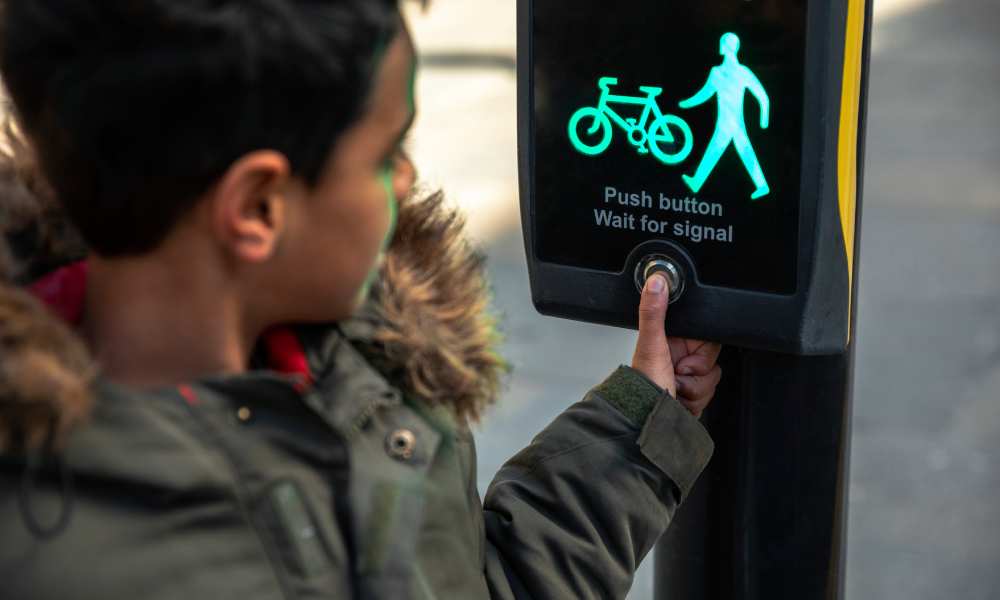We provide pedestrian crossings at road junctions and busy crossing points. This is to protect road-users and help them cross the road easily.
We can only install a pedestrian crossing at sites that meet the national assessment criteria. This takes into account these factors:
- traffic speed.
- how hard it is for pedestrians to cross the road.
- the number and nature of personal injury accidents, mainly those that involve road-users.
- the volume of traffic throughout a given day compared to the number of pedestrians crossing the road in an area. This is classed as frequency of use.
- site conditions/nature of the road and constraints.
- funding and available resources.
Read about the requirements for installing a pedestrian crossing in the Local Transport Note on The Design of Pedestrian Crossings.
Types of crossing
| Crossing | What they are |
| Zebra | Zebra crossings are noticed easily because of the black and white lines that go across the width of the road. |
| Pelican | Pelican crossings have zig-zag lines and traffic lights. Pelican crossings are controlled by the pedestrian pressing the button on the WAIT box. They can be in a straight line or staggered. A pelican crossings that goes straight across the road should be treated as one crossing. It still applies if it has a central island. Staggered crossings (not in line) should be treated as separate crossings. |
| Puffin | (Pedestrian user friendly intelligent crossings) These pedestrian crossings look very similar to pelican crossings. They have sensors on top of the traffic lights. These sensors detect if pedestrians are crossing slowly and can hold the red traffic light longer if needed. |
| Toucan | Toucan crossings are also similar to pelican crossings, but they allow cyclists and road-users to cross |
| Pegasus | Similar to toucan crossings, but these allow horse riders to cross too. These crossings include a second crossing place. They have separate approaches and light controls. They're next to the cyclist and/or pedestrian crossing. They're normally used outside race courses or areas where horses are trained. |
| Traffic island | Where there isn't the need for a pedestrian crossing, a pedestrian refuge, or traffic island, may be used. These narrow the road and allow pedestrians to cross in two halves. They also have a safe place to wait in the middle. Pedestrians should cross with care as drivers have priority at traffic islands. |
You'll find details of how to use pedestrian crossings in the Highway Code.

